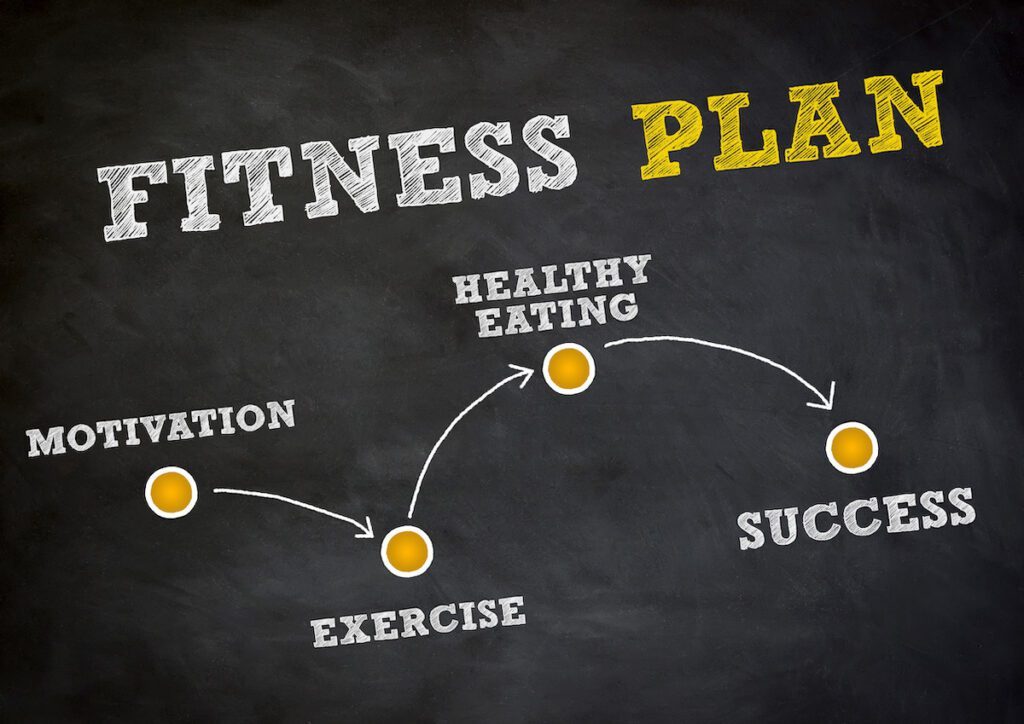As a beginner, are you curious about how to build muscle and smash a plateau? Five times a week, two hours each visit doesn’t always help you reach your goals faster.
You’ve been more faithful to your gym schedule than you were to your last girlfriend. And for a while, it paid off: those muscles started rippling, and the girls started paying attention.
But then, like a bad dream you wake up from, your muscles suddenly weren’t growing anymore. As a result, your muscles stop responding to your heavy workout no matter how intensely you’ve been training.
But then you decide to train harder. So now you put in three hours a session, and even as you upped your gym dosage, horrors of horrors, your muscles are shrinking.
Ahhhhh, the Gym Plateau. It afflicts all of us, and few have escaped it. Most people don’t even know that they have hit the dreaded plateau and think that their muscles can only grow so much due to inherent genetic factors.
Not to worry, though. If you read the following fitness tips and follow these tips to the letter, we can assure you that your muscles will start growing again and grow bigger they will. Here is a list of fitness tips:

Take A Break
This tip is easy for most of us to comply with but very difficult for some gym rats. Take a break from your workout. Do not step into the gym or do any workout for two weeks. It’s time to let your body recover from the punishments you are dishing out to your muscles.
Some bodybuilders may find this difficult to do because working out is addictive. You produce endorphin when you workout, also known as the happy hormone. The same hormone you produce when having sex.
Professional bodybuilders take a break after every 4-5 months of hard training, and when they are back in the gym, they shock their well-rested but complacent muscles into massive muscle gain.
Are you training too often?
If your exercises are intense enough, you need only to train each muscle group once or twice a week. Your training schedule shouldn’t repeat muscle groups in the same week. Every time you train, you do your muscles damage.
Muscles need time to repair, and they do so after your training when you are resting. Also, if you lift weights on consecutive days, there isn’t sufficient time for the body to recover. So try to have one day of rest between each weight-lifting day.
If your routine requires intensive weight training, remember not to prolong your gym time for longer than an hour. Also, this is because your cortisol, a muscle-eating hormone level, will be elevated and thus will be counterproductive to your efforts. Cortisol eats your muscles.
Most of all, you must sleep! Eight hours or, even better, go for ten hours. Thus, this is because muscles do not grow in the gym; they grow when you sleep. When you sleep, you are secreting growth hormones for many bodily functions, and one of those functions is to build muscles. That is why they called it beauty sleep!

Are you using the correct weightlifting techniques?
If your technique or form is incorrect, your training is ineffective, but you also invite injury. Don’t laugh. But when you exercise, you must think and focus. Instead of mindlessly repeating the motions, note how you perform each exercise and rep.
Do so with deliberation. Pause and squeeze the muscles you exercise at the beginning and end of every lift. Mind and muscle must connect! Never use swing momentum to lift the weights and let gravity pull the weight down. Instead, you must lift slowly and lower slowly, feeling the tension in your muscles and resisting the load.
For muscles to grow, you have to stress them to the maximum and then further. Do enough repetitions until you feel you cannot go further using good form. You must increase the weight or the number of repetitions at the next session.
This is called progressive overload, and progressive overload is what forces your muscles to grow. As a general guide, if you can lift more than 12 reps, the weight is probably too light, and it is too heavy if your muscles fail you in less than five reps. You may wish to consult your physical fitness trainer on the correct form and technique for each exercise.

Are you using free weights?
Most machines do not involve as many synergistic muscles (supporting muscles) as free weights. And, therefore, do not build as much muscle mass.
Synergistic muscles are the smaller muscles that aid the main muscles in balance and strength during each lift. Machines have their uses but use free weights for smashing plateaus.
Workout with compound exercises
Compound exercises involve two or more joint movements, employing bigger and more synergistic muscles. For example, bench presses, deadlifts, squats, and back rows, amongst others, are fantastic compound exercises.
When you squat, all the muscles in your lower body get a workout, which is about 60 percent of your overall musculature. Squat also works your back and abs too. Using more muscles at one go means getting a better overall workout that will allow you to break through a plateau.
To add icing to the cake, you will pant, huff, and sweat more because of the massive utilization of your muscles. That means your routine also has a cardio effect, and you will burn calories even hours after you step out of the gym.
Are you working out your legs?
Your body is programmed to grow proportionately with only slight variations. If you do not train your legs, your upper body mass will stop growing before it becomes significant. Indeed, you’ve heard of chicken legs! Just because leg training can be brutal, it doesn’t give you a reason to hide your legs in your pants.
To get that superhero X-frame, pepper your routine with squats. A word of caution, though: compound exercises such as deadlifts, squats, and bench press you must do with excellent form, and we highly recommend a spotter.
This is where your physical fitness trainer will come in handy as your spotter. If not, injuries are bound to happen, which may put you permanently out of the gym.

What are you eating?
Muscle building requires protein – the more, the better. Meat, especially red meats and fish, is the best source. Your body will draw nutrients for strength and necessary fats for joint and organ protection in your food.
To build muscle and smash a plateau, you need about one gram of good protein per pound of your body weight. If you want to get serious about muscles, you may need to supplement them with protein shakes.
Eating a meal and having a protein shake immediately after your workout also allows rapid absorption of nutrients. Also, this is important as you need to feed the muscles now that you have damaged them.
You should also have six small meals daily, so your muscles are constantly fed throughout the day. Thus, this will help rev up your metabolism to burn fat too. Finally, this will tremendously help you build muscle and lose weight program. Remember to take your protein shake half an hour before you workout too.
How about Carbs?
Glycogen is the primary energy source for any muscle-building exercise. The body stores whatever carbohydrates you eat as glycogen, and muscles use it to give you energy during your workout.
After an intense workout, consume carbohydrates immediately to replace the used glycogen. You can even indulge in high glycemic carbs such as bread, which will quickly turn into insulin and shuttle nutrients such as protein to your muscle cells.
And Fats?
Yes, your body does need fats to build muscle, plus it can help you get through a plateau. But try to avoid saturated fats such as animal or trans fats, and artificial fats found in pastries, confectionaries, and preserved food. Instead, consume healthy unsaturated fats such as olive oil, fish oils, eggs, avocados, almonds, and flaxseed oil.

Water is essential
Water is essential to build muscle and breaking through a plateau. It is the most underrated macronutrient. You need at least eight glasses of water every day, but you lose even more water because of sweating when you exercise. So drink before, during, and after your workout. Weigh yourself before and after the workout, and compensate for the loss by drinking at least 16 ounces of fluid for every pound lost.
Creatine
While meats are the best source of creatine, a nutrient that helps speed up muscle gain and power you up during workouts, those who do not get enough from their regular diet must supplement creatine. Creatine puts the volume into your muscle cells and gives you that muscle pump. Thus, your muscles feel tighter, look more prominent, and create an illusion of superb muscularity. It also helps to prevent muscle breakdown.
Glutamine
When supplemented, glutamine may help bodybuilders reduce the amount of muscle wasting away or using up as energy. It also helps in muscle recovery.

Do you change your routine?
The human body is fantastic at adaptation. So your body will get used to whatever routine you are on. So do change your routine every 6-8 weeks. We call this a periodization plan.
So, for example, instead of working out your chest muscles at the start of your workout, work your back muscles instead.
You can reverse your whole routine, change the variations of your exercises, or add new ones and remove some old ones.
By changing your routines, you not only shock your muscles to new growth but also prevent boredom by doing the same thing all the time.
The Last Word on how to Build Muscles and Smash Plateau for Beginners
You can reach your fitness goals faster with a science-backed diet and workout program. Building muscles and smashing plateaus is about progressive overload and a periodization plan.
Also, you can simplify the process using a fitness calculator and other technology. Keeping it simple helps you identify what you need to do to build muscle.
Tracking your calories, weightlifting volume, protein, sleep hours, and other measurements show how behaviors help you reach your fitness goals.
What do you think? Please share your response in the comment section below so that others can benefit from your experience.




